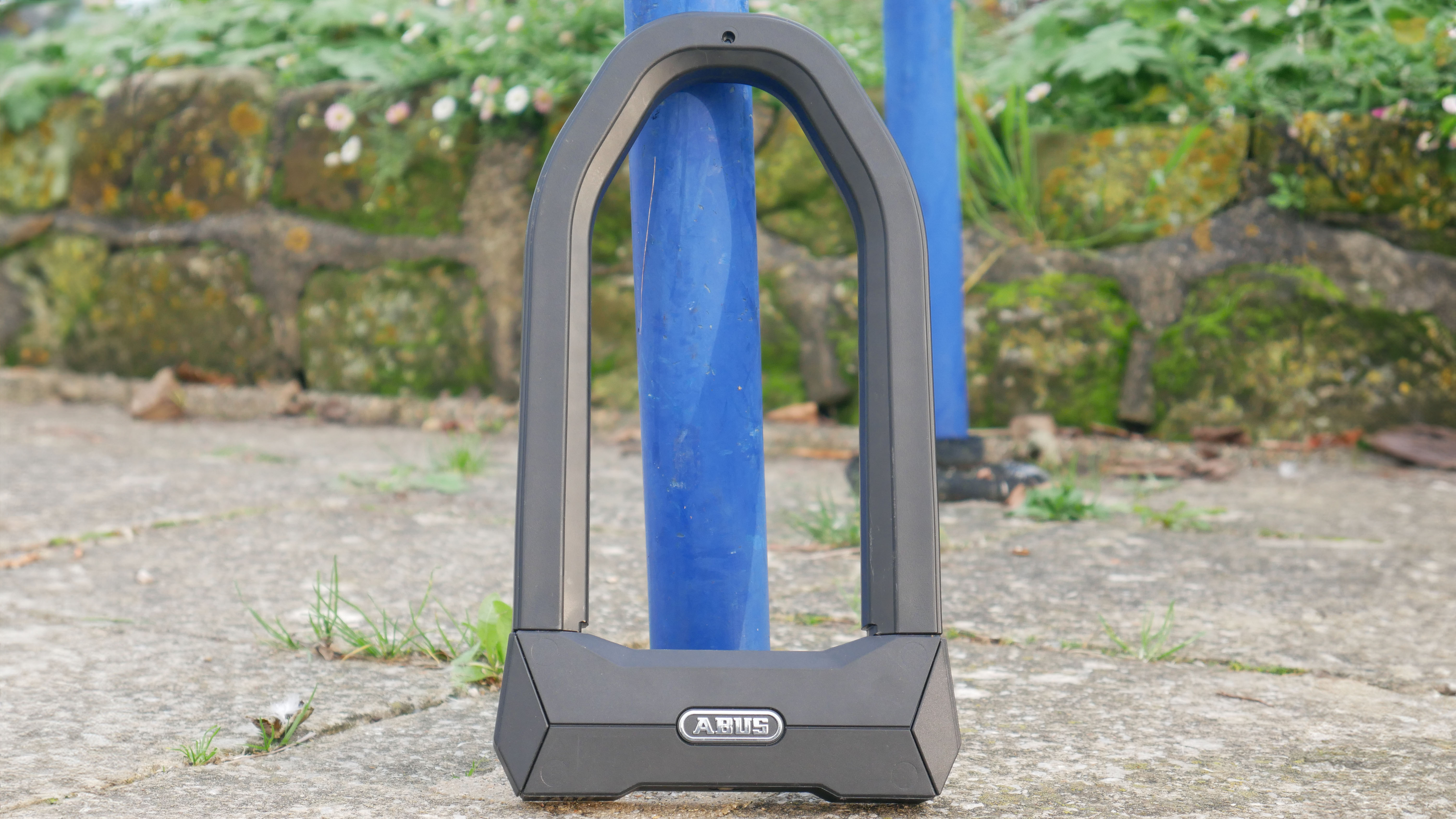
Like the other products in our angle grinder-resistant lock test, the Granit Super Extreme is a Sold Secure Diamond-rated lock. Abus is proud of both the lock’s resilience to angle grinder attack and its Made in Germany cachet.
Thieves once needed several tools and time to cut through the best bicycle locks. Hammers, bolt cutters, and hacksaws were commonplace. Now, they generally require just one battery-operated angle grinder and a few seconds. The Granit Super Extreme 2500 has been developed to combat this worrying trend, turning the tables on the modern bike thief.
Additionally, this was by far the easiest lock to transport, thanks to its versatile, high-quality mount.
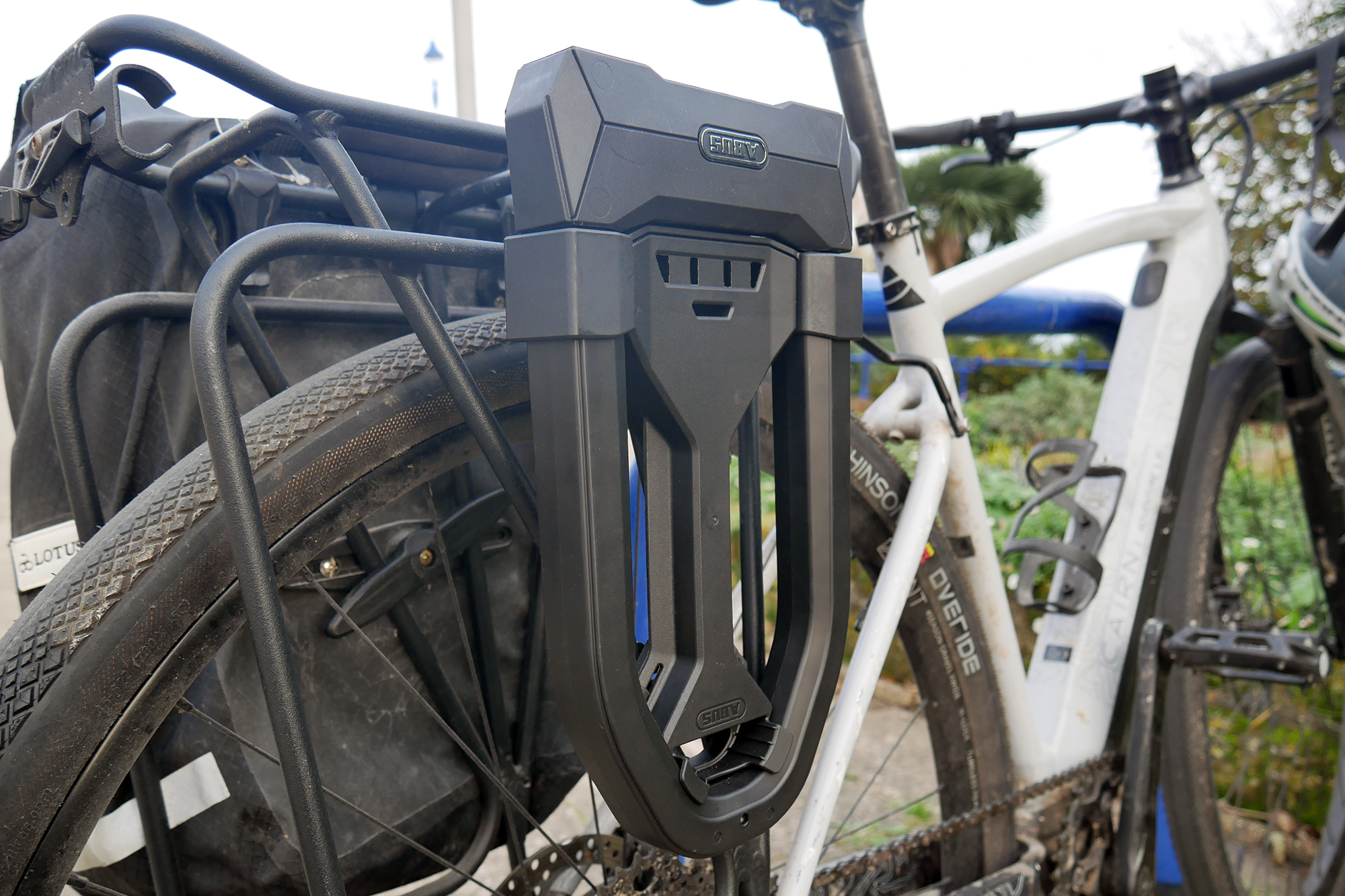
Construction
Like its competitor, the Litelok X3, the Granit’s construction is largely based on chemistry and material science. Specifically, the Granit SE uses what Abus calls Wolfram Carbide, more widely known as Tungsten Carbide. This material combines tungsten steel with carbon, producing the second-hardest known substance after diamonds.
Abus crafts this into a 27 mm square parabolic shackle with a total area of 220cm²/33.5”², making it the second most capacious lock in the test, just behind the Hiplock DX1000's 225 cm². This corresponds to a lock measuring 22cm/8.6” in height and 10cm/3.9” in width. Weighing 2.1kg/4.6 lbs, the Abus lock is the second lightest in the test, narrowly outpacing the X3 by 100 grams/3.5oz.
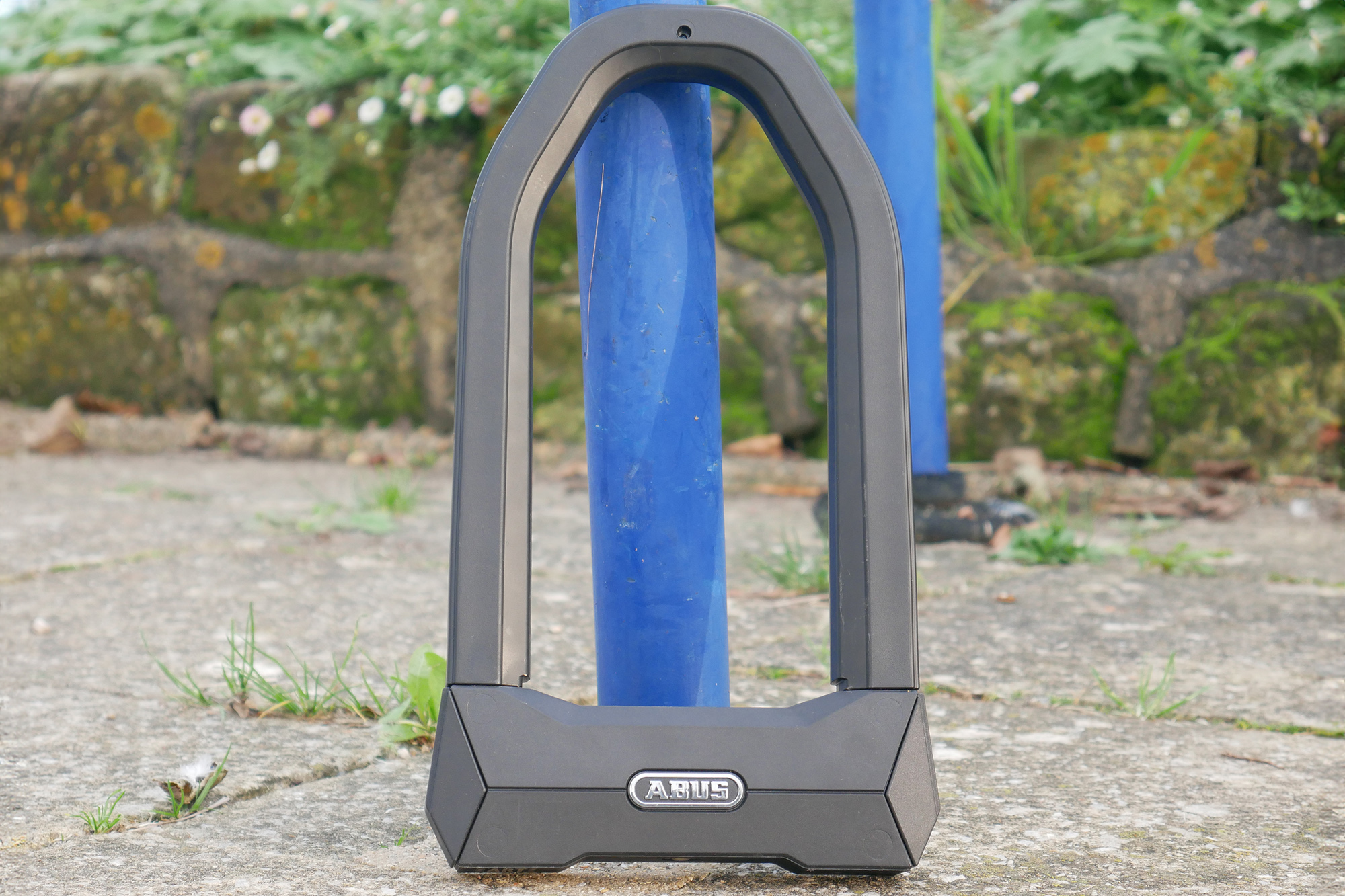
Abus has equipped the Granit Super Extreme with its proprietary X Plus lock barrel, which it says provides "exceptionally high resistance to manipulation, such as picking.” It only comes with two keys, the fewest among our selection of angle grinder-resistant locks, but based on my experience, Abus keys can be easily replaced, provided you keep the credit card-sized code record somewhere memorable and safe.
Specification
In Use
Like the X3 and the OnGuard RockSolid, the Granit SE feels reassuringly solid, and secure. There is no play between the shackle and the lock, which makes a satisfying click when engaged. It even looks chunkier than its two competitors, which helps as a visual deterrent. The Abus does feature a slightly harder plastic coating, which, while it feels more robust, could be less kind to your frame's paintwork.
Throughout testing, the Granit Super Extreme performed as I would expect a $320/£260 lock to. The shackle’s extra reach was welcome, and I could easily slide the lock around my large E-bike downtube. I was even impressed with the Granit’s mount.
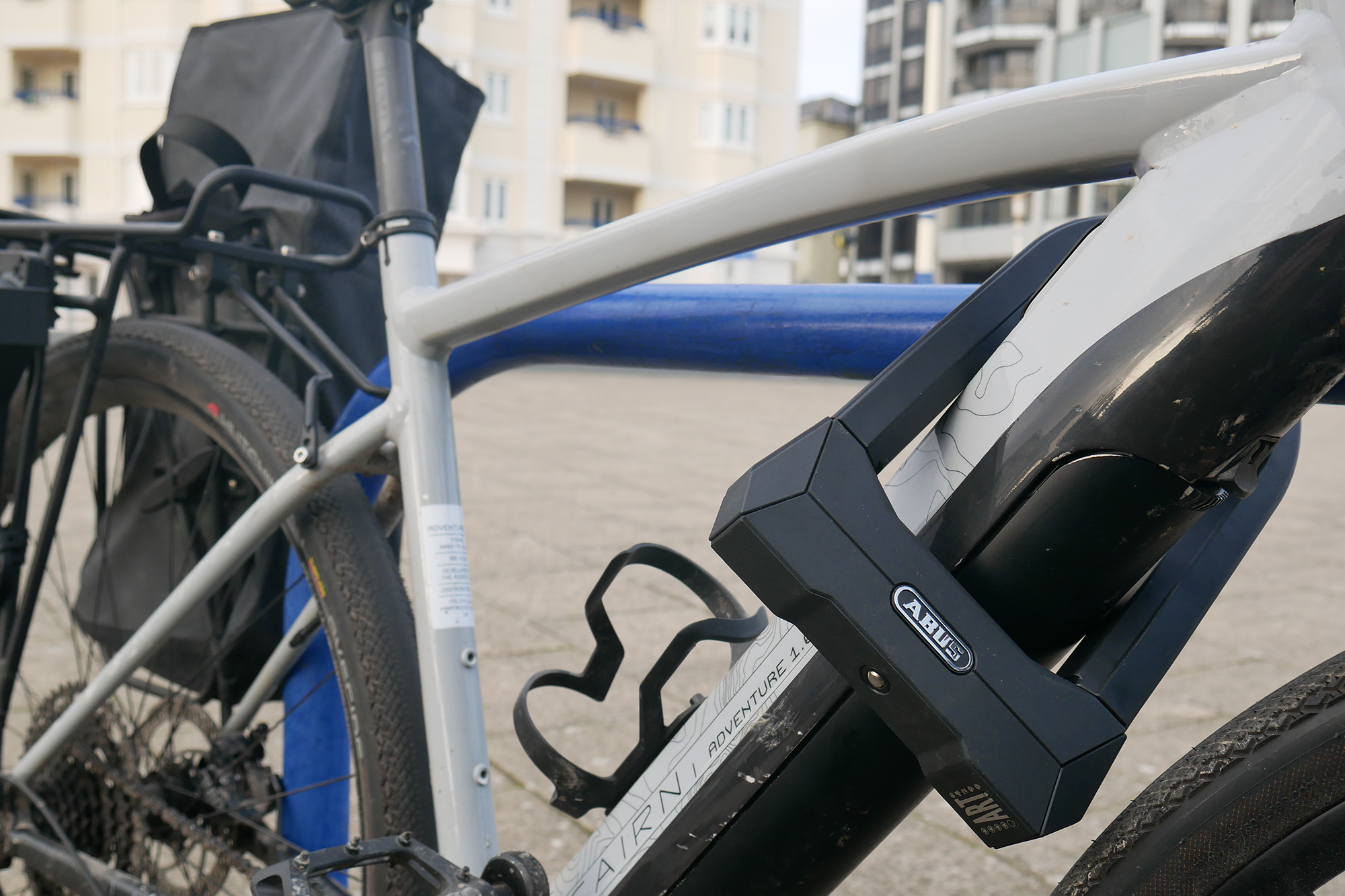
My go-to lock is a small Kryptonite U-lock weighing around a kilo. It's not the safest lock, but it's easy to transport. At 2.1kg, the Abus is the second lightest lock on test, yet even that extra kilo was noticeable, though not as much as the even larger, heavier 2.7kg Hiplock.
This is where the Abus Granit’s mount is brilliant - clearly, much thought has been put into its placement and design. Despite being a little fiddly to fit, it held the lock securely and never rattled. Ideally, it is designed for a pannier rack, although Abus says it can also be mounted between the chainstay and seatstay. While I didn't try this, I did offer it up, and it seemed plausible.
The Angle Grinder Test
During everyday use, the Granit Super Extreme held its own against the Litelock X3 and the OnGuard RockSolid. Unfortunately for Abus, the Granit lost ground during our angle grinder test. While the Granit SE did not fail our angle-grinder test, its performance was poorer than the X3, RockSolid, and DX1000.
During our five-minute test using a battery-operated grinder fitted with metal-specific cutting discs, I used only one disc, and I was able to cut just over halfway through. If we extrapolate that, with potentially two cuts required to remove the lock completely, the Abus would only need 2-4 discs and around 20 minutes to remove it. Compare that to the X3, which would require 8-10 discs over the same period.
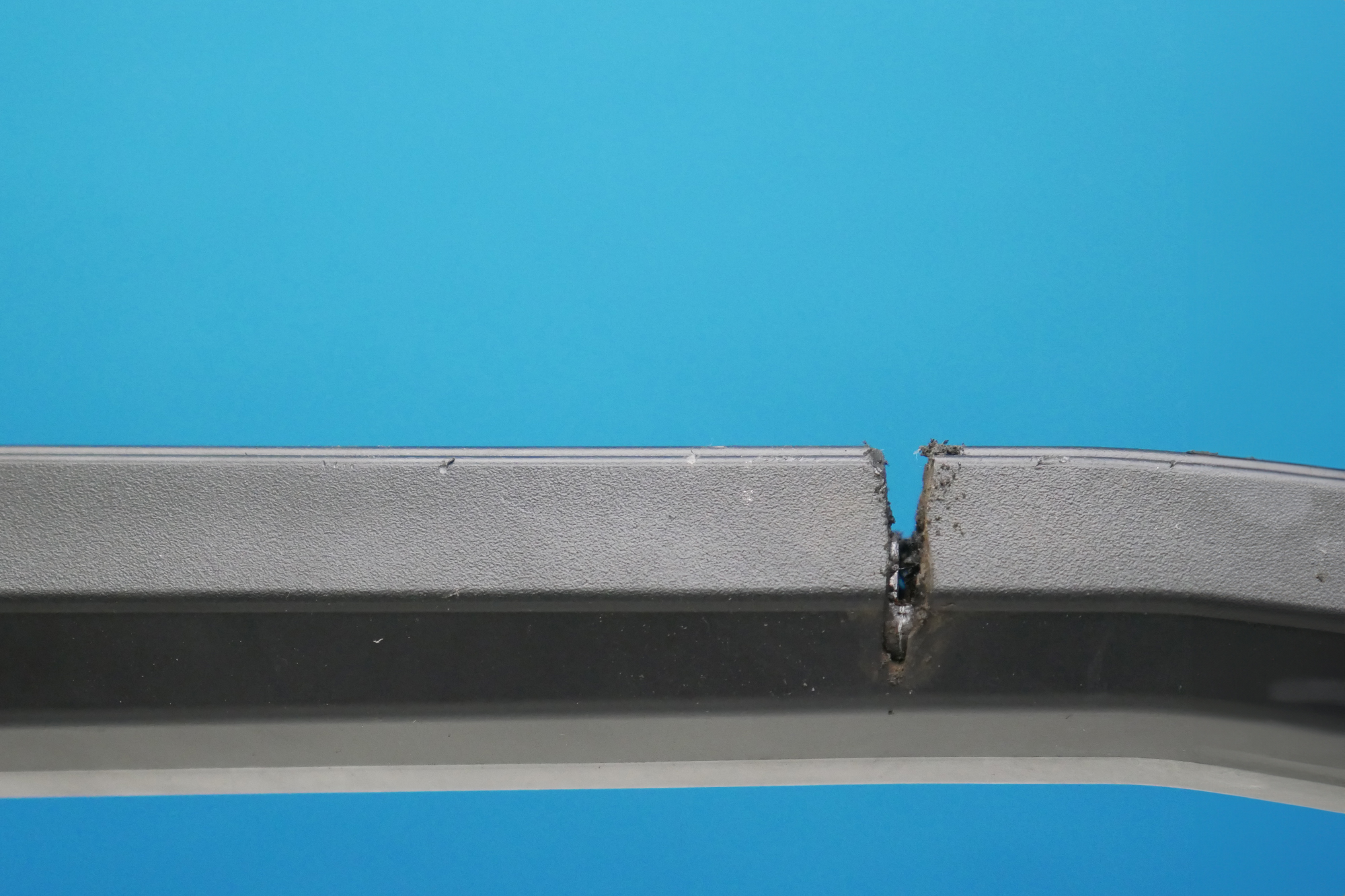
The Abus is clearly resistant to angle grinders. However, in a group test, where all five locks offered decent resistance to angle grinder attacks, they must be ranked based on performance. If you encountered a very determined or well-equipped thief with time and patience, the Abus clearly underperformed the competition. To put that in perspective though, the likelihood of a thief having twenty minutes and multiple disks to hand is remote. But not impossible.
Value and conclusions
At £260/$320, the Abus Granit Super Extreme 2500 is the third most expensive on test. However, considering that it includes a superb mount (an additional purchase for the Litelok X3), the Abus represents great value.
While there is some nuance in how well our group of locks performed during the angle grinder test, the Litelok X3 does outperform Granit Super Extreme. This moves the Abus into third overall and out of the best value slot.
However, for many, Abus is a known entity, and the quality of the Granit SE is second to none. If you like to travel light, keeping the weight on the bike rather than on you, then there is no significant reason not to choose the Abus Granit Super Extreme.
How I tested this lock
After hours of losing myself in YouTube rabbit holes, my research revealed that opportunistic bike thieves typically have under a minute to steal a bike. This makes the five minutes allocated for our test seem quite generous.
To remove a bike lock with an angle grinder, you can either make two precise cuts—one on the shackle and another on the lock barrel—or cut the shackle once and twist the lock. Given that most locks today are equipped with anti-twist and tamper-resistant features, I would likely choose to make two precise cuts.
This limitation is why some tests I've seen don't accurately reflect real-world situations. Based on my findings, it may require 5-10 angle grinder discs and approximately 20 minutes to cut through one of these locks. Thus, I was eager to investigate if bike locks marketed as angle grinder resistant actually failed within a more realistic time frame.
Using a high-powered, battery-operated angle grinder with top-quality metal-specific cutting discs, I set the task to take a maximum of five minutes. This would accommodate any necessary disc changes and better simulate a thief's time in low-foot traffic areas or after gaining access to a shed or garage.







